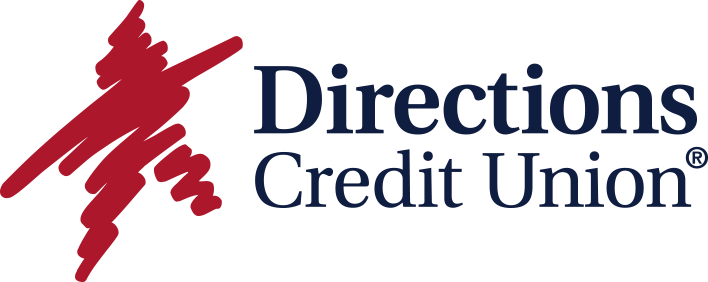Reduce Your Risk of Identity Theft
- Details
- Written by Remar Sutton
- Category: Articles

How big a problem is identity theft? It's an epidemic. The Javelin Strategy and Research 2010 Identity Fraud Survey Report indicates there were 11.1 million adult victims in the U.S. in 2009 and that the total one year fraud amount was $54 billion.
Taking steps to learn about the dangers of ID theft and to prevent becoming a victim makes smart sense.
Having one's personal identity stolen can be costly and frustrating. Taking steps to learn about the dangers of ID theft and to prevent becoming a victim makes smart sense. This brief report shares the basics of what you need to know and provides links to other excellent resources.
What is Identity Theft?
In identity theft fraud, the thief uses your name, personal information, and credit to steal products and services and leaves you holding a bag of troubles.
Some of the most common forms of identity theft perpetrated by these scoundrels include:
- Opening new credit card accounts in your name but with a different address; then running up as high a balance as possible on the card.
- Changing the address on your current credit card accounts then running up charges on your account without your timely knowledge.
- Establishing new cellular phone or utility accounts using your identity and running up charges.
- Opening banking accounts using your identity and writing bad checks.
- Obtaining the numbers of checking, savings or other financial accounts and stealing the money.
- Getting a loan in your name.
- Purchasing a car by getting the auto loan using your name and credit information.
How Do Thieves Get Personal Information?
Some methods have been around a long time. Newer ones have emerged in the age of the Internet.
Stealing mail. Incoming mail, stolen from unsecured mailboxes, yields credit card and bank statements, insurance correspondence that provide account numbers and sometimes other information such as Social Security Numbers or date of birth. Outgoing mail left in an unsecured mailbox can provide similar information plus checks signed with your signature. Clever thieves open the mail, take the information off any relevant documents, reseal it and return it to the box—victims have no clue they've been ripped off until weeks later.
Stealing wallets or purses. Driver's licenses, military and school identity cards, Social Security cards, credit cards, insurance cards, and checkbooks offer thieves a treasure trove of information.
Sending a change of address. The thieves change the delivery of mail to a different address and intercept your personal information.
Soliciting account information over the phone or via email. Scam artists make calls or send email posing as an official with the police or your bank or a credit card company or your Internet service provider, etc. They say that they need you to confirm such information as date of birth, mother's maiden name or account numbers. Legitimate businesses do not confirm information in this manner.
Accessing personal information you share on the Internet. Sharing personal information in chatrooms, on forums, or on social networking sites invites trouble. Certain "business" or "sales" sites may also pose a danger.
Using fake websites to solicit your personal information. In an identity-theft con called "phishing" the thieves create a website that looks like it comes from a legitimate company you may do business with—bank, phone company, insurance company, Internet service provider, for instance. The website may even have a "spoof" address that appears to have the URL of the real company. Then the thieves email you a note and ask you to confirm personal information that has been "lost" or "corrupted" or some such by clinking on a link in the email that takes you to the realistic looking fake website. The catch is that legitimate companies never request personal info in this way.
"Dumpster diving"—going through trash. Thieves search through residential and business trash looking for items with personal information such as unshredded statements, credit card slips, pre-approved credit card offers, insurance forms or records.
Buying it on the Internet. Not only do some Internet-based companies sell personal information, but a lot of personal information is readily available on the Internet for a thief with modest skills who knows where to search.
Posing as a person with legitimate access to your credit report. The thief obtains your credit report by posing as a landlord, employer, auto loan manager or other person with a legal right to see it.
"Shoulder surfing". The thief obtains your PIN number by watching at ATM machines and phone booths.
How Can You Lower Your Risk of Identity Theft?
Although there's no way to eliminate the risk entirely, these tips can increase your protection.
Shred it. Destroy all documents and credit card applications containing personal or financial information before throwing them the trash. Experts recommend using a cross-cut shredder that produces confetti bits rather than strips. If you destroy by hand, rip through the middle of any account numbers, social security numbers, etc. and put half in one trash bag and half in a separate bag.
Lock it. Protect your mail. If your mail box does not lock, consider a post office box or a letter slot in the door where door-to-door delivery is available.
Post mail in secure letter boxes. Rather than place outgoing mail in your home mailbox or an open box at work use a Post Office letter box or station.
Leave your Social Security number at home. Do not carry your SSN in your wallet. Also, memorize any PINs or passwords; don't carry them in your wallet or a notebook. Do not put your SSN in "log-in rosters" for college classes or other such purpose—in fact, protest to your school if they use such rosters or if they use your SSN as your student ID number.
Carry only the credit cards you need. Experts also recommend further protecting those cards by placing PINs or passwords on them.
Make sure your driver's license number is not your Social Security Number. Your state Department of Motor Vehicles will change this at your request.
Do not give personal information to anyone soliciting account information over the phone or via e-mail. Be wary of calls or e-mails from individuals requesting you to confirm personal information. Never provide this information to a stranger, no matter how hard they try to persuade you. Do not respond to such e-mails. In fact, get out your legitimate statement and call the customer service number and report the fake.
Stay alert for billing cycles. If you don't receive a credit card or bank statement at the regular time, check up on it.
How Well Are You Protecting Yourself Now?
Taking the Identity Theft IQ Test, prepared by the Privacy Rights Clearinghouse, will give you an idea of what you are currently doing right and where you need to improve.
What Should You Do If You Become a Victim of Identity Theft?
This article is too brief for full details, but the basic steps recommended by the FTC and other experts include immediately:
- Placing fraud alerts on your credit report with the three major credit bureaus
Informing credit card companies and other creditors about tampering or problems with specific accounts. You can use the FTC's ID Theft Affadavit (pdf) to provide this information to participating financial institutions and businesses. This starts the investigation process so the company can decide the outcome of your claim.
Informing police of the crime and obtaining a police report
Calling the ID Theft Clearinghouse Hotline (1-877-ID-THEFT [1-877-438-4338]), run by the FTC, which can provide further counsel and help.
For a wealth of information about ID Theft and resources for responding when you are a victim, I recommend the following excellent web sites:














